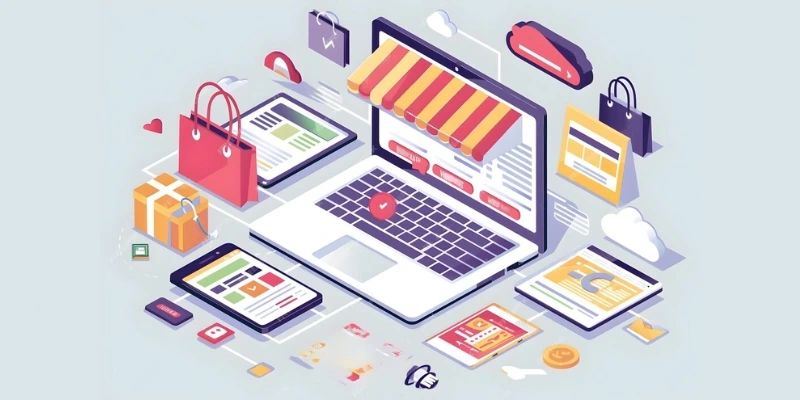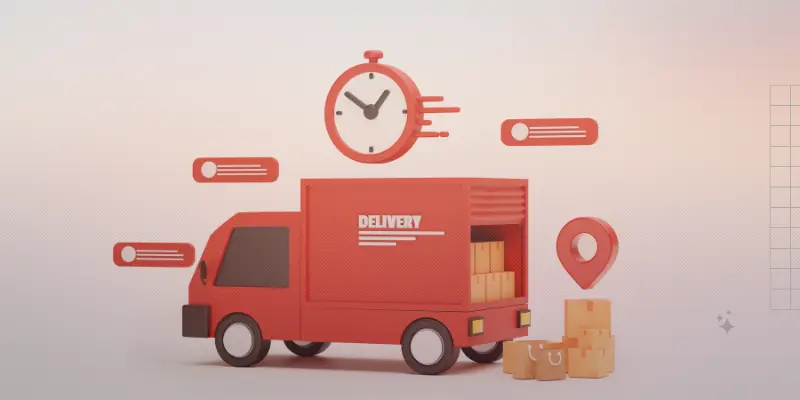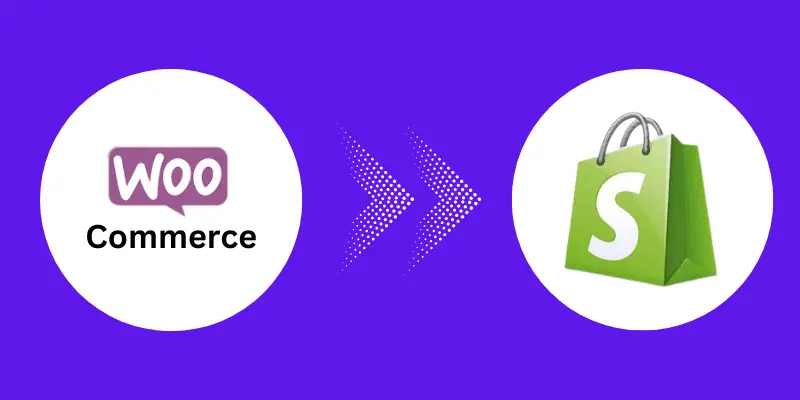Shopify stands out as an eCommerce platform of choice thanks to its intuitive design and robust capabilities. Understanding its price in Australia can play an essential role in its adoption process. Budgeting properly ensures maximum returns from this investment decision.
Australian Shopify charges depend upon several variables, including package selection, additional features selected, and the level of personalization required. These costs vary based on specifics like these.
Engaging a Shopify development company Australia could also affect costs. They provide customized designs tailored specifically to meet your requirements; however, due to additional services they may offer, these costs will increase accordingly.
This guide explores the factors impacting Shopify prices in Australia so that we may help you make informed choices and effectively plan for budget allocation.
Factors Affecting the Cost of Shopify Development in Australia
Different elements that impact the costs The various elements that affect the cost of developing Shopify apps in Australia provide information to assist you in making educated decisions.
Project Scope and Complexity
The complexity and scope of the scope and complexity of your Shopify development plan play an important role in determining cost. An entry-level Shopify store with standard functions is usually less costly than a bespoke solution with more advanced features. The factors to take into consideration are:
-
-
Several features: An easy store with standard features (product lists and payment gateways) costs less than high-end features, such as customization of integrated systems, sophisticated analytics, or more complex workflows.
-
Design complexity: A custom-designed store featuring distinct layouts, animations, and premium graphics will require more fabulous time and effort than a template-based layout, increasing the development cost.
-
Functionality requirements: The addition of custom functions or the integration of third-party applications (e.g., CRM systems, ERP software, CRM systems) will increase the cost because of the extra creation and testing that is required.
-
Development Team Expertise
The knowledge and expertise of the developers influence the costs of Shopify app development Australia. Things to take into consideration are:
-
-
Experience level: Experienced designers and companies with a track record of success in Shopify development will typically be able to charge more. Their knowledge often leads to quicker project completion and higher-quality results.
-
Particularization Specialization: Experts with expertise in shopify development, expertise in particular areas, or advanced customizations might charge higher rates for their specialist skills.
-
Agency as opposed to freelancer: Most agencies offer higher prices because of their total services, which include project management, design, and continuous assistance. Freelancers might have lower prices, but they might not offer the same levels of Support and service.
-
Design and User Experience (UX)
Design and customer experience are crucial factors in the user experience of your Shopify store. Investing in a high-end store's design could increase customer satisfaction and conversion rate, but it could also increase development costs.
-
-
Custom, as opposed to Template Design: Custom-designed designs tailored to your company's branding and audience will be more costly than pre-built templates. Custom-made designs offer distinctive design and function but require more time and knowledge.
-
Mobile Receptivity: Designed for mobile devices, your website must be competitive in the current marketplace. Mobile optimization requires more planning and development and can affect the overall price.
-
User Experience Improvement: features like customized search options, personalized suggestions, and streamlined checkout procedures can improve the UX but could also increase costs.
-
Integration and Customization
Making changes to the appearance of your Shopify shop and linking the store with other systems or tools may significantly influence the cost of development.
-
-
Third-Party Integrations: Integrating your Shopify store with tools from third parties (e.g., merchant platforms, payment gateways, or shipping service providers) usually requires custom work, which can make the process more expensive.
-
Customized Features: Customizing functions or features like bespoke reporting dashboards or unique user interfaces usually raise a project's cost.
-
API integrations: Integration with any other application or service via APIs may be complicated and require extra development time and effort.
-
Content Creation
High-quality content is vital to making customers feel welcome and generating sales. Creating content could affect the expense of developing Shopify apps in Australia.
-
-
Listings of Products: Creating precise and well-optimized product descriptions with high-resolution photos and convincing descriptions could increase the development cost.
-
Blogs and Articles: Adding a blog or other rich-content features will require more development and continuous content maintenance.
-
Multimedia: Incorporating multimedia elements like videos, animations, and interactive functions will increase user interaction but could also result in higher costs.
-
Ongoing Maintenance and Support
Following the initial design, regular maintenance and Support are essential to ensure the efficient and smooth operation of the Shopify store. This includes updating bugs, fixing bugs, and providing technical assistance.
-
-
Maintenance plans: Certain development companies offer maintenance plans as part of their packages, which could add to the total expense. These plans typically include regular updates, security patches, and minor changes.
-
Technical Support: Depending on the degree of support needed, technical support access to resolve issues and troubleshooting could be an additional cost.
-
Geographical Location
Your development team or agency's location could affect the costs of developing Shopify apps in Australia. In Australia, it is possible to find the price of working hours and living costs for developers related to the place of work.
-
-
Cities and regional: Services for development in large cities such as Sydney and Melbourne might have higher costs than regional regions because of the high cost of living and highly competitive markets.
-
International vs. Local: While working with agencies or developers worldwide may provide cost savings, it can also come with difficulties related to communication, time zones, and quality assurance.
-
Project Timeline
The duration of your Shopify development project could affect the overall cost. Shorter timelines usually mean more significant costs due to the requirement for speedier tasks and the need for additional resources.
-
-
Fast Jobs: If you need an immediate turnaround time, be prepared to pay to have your project developed and delivered faster.
-
Phased development: The project's spread through multiple phases could help control costs. It also allows greater budget flexibility and the ability to gradually deal with any changes or upgrades.
-
Additional Costs
A variety of extra costs could be incurred as a result of Shopify's development process to be considered:
-
-
Shopify Subscription Costs: The cost of the Shopify subscriber plans (Basic, Shopify, Advanced) will impact your overall budget. The higher-tier plans include more capacities and features but are also more expensive.
-
Domain registration: Purchasing a custom domain and setting up the associated services for domain registration can be a part of the total expense.
-
SSL Certificates: Secure transactions using SSL certificates: An SSL certificate is essential to any online store. However, it can be an expense if it is separate from the Shopify package.
-
Cost of Hiring a Shopify Developer in Australia
In this thorough article, we'll look at many aspects of hiring the services of a Shopify designer in Australia with a focus on factors that influence prices, the average price, and strategies for managing your budget efficiently.
Understanding Shopify Developer Costs
The price for employing the services of a Shopify designer in Australia will vary depending on various aspects. For a more clear picture, Let's look at the main factors that affect the cost of hiring a Shopify developer:
#Experience and Expertise
-
-
Junior Developers: JDs are generally younger developers with little experience who may charge lower prices. Their fees typically range from AUD $50-$80 an hour. Although they can be more accessible, they could require excellent supervision and more time to finish jobs.
-
Middle-level developers: Developers with a couple of years of experience typically cost between $80 and $120 an hour. They have decent knowledge and are often more effective than junior developers.
-
Senior Developers: Senior developers with years of experience and expertise charge between AUD 100 and $200 per hour. They are experts in their field and can handle large-scale tasks with little supervision.
-
#Project Complexity
-
-
Basic Store Configuration: Basic Store Setup Shopify store setup includes theme customization and basic plugin installation, so it is possible to spend around $1,000-$3,000.
-
Customized features and integrations: Depending on the extent and complexity of your project, when your project calls for custom functions, integrations with third-party solutions, or a unique feature, the cost could range between AUD 3000 and $10,000 or more.
-
Continuous Maintenance and Support: Support and maintenance support, is usually charged at a lesser cost than development. Depending on the support needed, they can cost AUD 500-$2,000 monthly.
-
#Location and Availability
-
-
Local and remote developers: Using an Australian local Shopify developer could be more expensive than a remote developer. Local developers have an advantage by being located within the same timezone as remote developers and possibly offering more excellent communication and customer support.
-
Freelancers vs. Agencies: Freelancers can offer lower prices than agencies. In contrast, agencies usually provide an experienced team, such as designers, project managers, and developers, which can help with larger-scale projects.
-
Average Cost Breakdown
To provide you with more of an idea of what the cost is, let's look at the median prices for different kinds of Shopify Development services:
#Initial Setup and Design
-
-
Basic Setup: AUD 1,000 to $3,000
-
Custom Design and Development: AUD 3,000 to $7,000
-
Complex Customization: AUD 7,000 to $15,000
-
#Theme Customization
-
-
Pre-designed Theme Customization: AUD 1,500 to $4,000
-
Custom Theme Development: AUD 4,000 to $10,000
-
#App Integration and Development
-
-
Third-Party App Integration: AUD 500 to $2,000
-
Custom App Development: AUD 5,000 to $15,000
-
#Ongoing Maintenance
-
-
Essential Support $ AUD 500 - $1,500 per month
-
Complete Assistance from AUD 1500 to $3000 per month
-
#Additional Costs
-
-
SEO and Marketing Integration: AUD 1,000 to $5,000
-
Training and Documentation: AUD 500 to $1,500
-
Factors Affecting the Cost
A variety of factors influence the cost of hiring the services of a Shopify development company in Australia. Knowing these variables can help you plan your budget better and prevent costly costs.
#Project Scope
-
-
The more complicated the project you are working on, the more fantastic the price. Be clear about your project's scope and need to receive exact estimates from designers.
-
#Timeline
-
-
Urgent projects with deadlines could incur more costs due to accelerated projects. Set a realistic timeline for your project to prevent additional expenses.
-
#Developer's Location
-
-
Although local developers may cost more, they can be available for consultations and meetings. Depending on your project's needs, compare the benefits of remote developers versus local ones.
-
#Technical Requirements
-
-
Projects that require technical proficiency or exceptional functionality could be more costly. Be clear about your technical requirements for accurate estimations.
-
#Experience Level
-
-
The more experienced developers charge higher rates. Consider your budget and project scope before deciding between junior, middle-level, or senior developers.
-
Tips for Managing Your Budget
#Define Your Requirements
-
-
Before you contact developers, you must clearly state the project's requirements, objectives, and budget. This will allow you to get exact estimates and avoid any scope expansion.
-
#Get Multiple Quotes
-
-
Get quotes from several firms or builders to compare prices and services. This allows you to make a well-informed choice to get the best value for the money you spend.
-
#Negotiate Terms
-
-
Be prepared to negotiate prices and terms. Numerous developers are interested in discussing rates, particularly for longer-term or larger-scale projects.
-
#Consider a Fixed-Price Contract
-
-
If the project is well-detailed, Fixed-price contracts could be beneficial. They help understand expenses and reduce the possibility of unexpected costs.
-
#Plan for Ongoing Costs
-
-
Set aside money for ongoing maintenance and support costs. Updates and Support are vital to keeping your Shopify Store running smoothly.
-
#Evaluate Developer Skills
-
-
Examine the portfolio and skills of possible developers to ensure they meet your project requirements. A good developer can cut expenses in the long run through avoiding costly mistakes and delay.
-
#Leverage Australian Government Grants
-
-
Find out possible grants from government agencies or other funding options for digital development initiatives. These grants can offset some expenses associated with working with a Shopia developer.
-
Choosing the Right Shopify Developer in Australia
Choosing the best Shopify developer in Australia is vital to the growth of your online store. Here are a few tips to consider when picking a good developer
#Review Portfolios
-
-
Review the developer's previous projects to determine their knowledge and knowledge. An impressive portfolio shows the ability of their team to manage the same type of projects as yours.
-
#Check References
-
-
Get references or reviews from past customers. These will provide insights into the developer's ethics, reliability, and communication abilities.
-
#Evaluate Communication Skills
-
-
Communication is essential for successful development. Find a developer who can communicate clearly and promptly.
-
#Consider Technical Expertise
-
-
Ensure the developer has sufficient technical abilities and experience to meet the project's requirements, such as experience with Shopify's platform and the custom features you require.
-
#Assess Project Management Skills
-
-
An experienced developer with solid project management knowledge will help keep your project on track and within budget. Find developers who use tools to manage projects and provide regularly updated information.
-
#Review Contract Terms
-
- Review the contract carefully for scope, timeline payments, terms of payment, and any other costs. Ensure that everything is transparent so that there are no misinterpretations.
Steps for Shopify App Development in Australia
The steps required for developing an app for Shopify Australia begin with design to the launch and ongoing maintenance.
Define Your App's Purpose and Goals
Before beginning development, it's crucial to determine the goals and purpose of the Shopify application. This means determining the particular issue your app can help solve or what benefits it can bring to Shopify customers. Think about the following issues:
-
-
What issue does your app address?: Determine the issues or holes within the Shopify ecosystem the app addresses.
-
Who are your ideal users?: Understand the desires and needs of potential customers.
-
What functions are in your app? Outline the essential functions that help your app be successful.
-
The definition of these factors will aid in the development process and ensure that the app you create can meet the needs of your market.
Research and Analyze the Market
Conduct extensive market research to comprehend the competition landscape and uncover possibilities for growth. It involves:
-
-
Analyzing the existing Shopify applications: Analyze like-minded apps on Shopify's Shopify App Store to understand their strengths and weaknesses.
-
Recognizing markets with gaps: Find the areas where current apps aren't up to scratch or where there's a massive need for specific functions.
-
Understanding users' needs: Get comments from Shopify merchants to gain insights on their issues and feature requests.
-
These studies will help you improve your app idea and ensure it stands out in the marketplace.
Plan Your App's Features and Functionality
Develop an outline of the app's functions and features based on your study and goals. It should contain:
-
-
Core features: list the most essential functions your app is expected to include.
-
UX (UI) layout design: When creating the app's interface, focus on user-friendliness and usability (UX).
-
Requirements for technical use: The technical requirements should be specified. These include integrating Shopify's APIs as well as any other third-party service.
-
An organized plan can serve as a guideline for developing your app and help ensure that it meets users' expectations.
Choose the Right Development Approach
To develop a Shopify app's development in Australia, You have many options to build your app:
-
-
Custom development: Hire a developer team to create the app from the ground up. This is the most flexible option. However, it can be labor-intensive and expensive.
-
Shopify Agency for App Development: Work with an agency that is proficient in creating Shopify applications. This will help you make the process easier and provide the expertise you need to develop your app.
-
-
Freelancers: Find freelance developers who are proficient in Shopify application development expertise. It can be affordable, but it may need more personal supervision.
Pick the strategy that best aligns with your timeline, budget, and project requirements.
Develop the App
After you've decided on your development method, the actual process starts. The key steps to follow in this stage are:
-
-
Configuring the development environment: Create an environment that integrates with Shopify's tools and APIs.
-
The app's development: Design of the backend and frontend components. Ensure that they are compatible with the specifications for features and functions.
-
Integration with Shopify: Use Shopify's APIs and SDKs to incorporate your application with Shopify. Shopify platform. It involves managing, authenticating, and synchronizing data and other integration tasks.
-
Testing: Conduct thorough tests to discover and eliminate issues and ensure the app works correctly on different browsers and devices.
-
A well-planned development process will ensure a smooth and successful launch.
Test the App Thoroughly
Testing is one of the most critical steps while developing Shopify apps in the Australia procedure. This involves:
-
-
Functional tests: Test to ensure that all features and functions function as expected.
-
Performance tests: Test the app to ensure it works well under various conditions, such as high traffic volume or massive amounts of data.
-
Compatibility test: Try the application on different platforms, devices and operating systems to assure the same quality of performance and user approval (UAT). Involve actual users during testing to get feedback and find usability problems.
-
A thorough test helps to find and fix issues before the application is launched, ensuring a pleasant user experience.
Submit the App to the Shopify App Store
Once your app is designed and tested, it may submit it to the Shopify App Store. This includes:
-
-
Documentation preparation: Create a detailed document that describes the app, includes a features list, and includes instructions for installation.
-
Conformity check: Ensure that your app complies with Shopify's policies and guidelines, which cover data privacy, security, and quality standards.
-
Submission: Upload your app to be reviewed by the Dashboard of Partners for Shopify. Shopify's staff will examine your application to make sure your app meets their standards.
-
Reviewing your application can last up to a few weeks or days, depending on the level of nature of the app.
Promote Your App
After your app has gone live in the Shopify App Store, you must promote it to attract potential customers. Strategies for promoting your app that work consist of:
-
-
Marketing and advertising: Use digital marketing channels, such as the Internet, email marketing, and pay-per-click (PPC) advertisements, to get the attention of potential clients.
-
App Store Optimization (ASO): Optimize your app's listings with keywords that are relevant, appealing descriptions, as well as appealing images to increase your app's visibility on the App Store.
-
Customer engagement: Engage users via customer support, tutorials, and other updates to create an excellent reputation and encourage people to refer friends and family.
-
Promotions can increase downloads and the use of your application, contributing to overall popularity.
Monitor and Maintain the App
After the app's launch, it's essential to maintain and track your application to ensure continuous growth. It involves:
-
-
Performance tracking: Analytics tools are used to keep track of app usage and user feedback.
-
Problems to be addressed: quickly include issues or bugs that may arise and offering timely updates to users.
-
Adding new features: Features will update your app with options and enhancements based on user feedback and market trends.
-
Continuous maintenance ensures that your app is valuable and relevant to users as time passes.
Seek Feedback and Iterate
Get feedback from users to better understand their feelings and pinpoint areas for improvement. Use this feedback to refine your app and increase its functionality and user-friendliness. Updates and upgrades regularly ensure that your app remains relevant and in tune with user demands.
Conclusion
The cost associated with Shopify in Australia is crucial for companies that wish to use this powerful ecommerce platform. While Shopify offers a variety of pricing options to accommodate the different needs of companies, the price of each differs depending on other aspects such as customisation, app integrations as well as ongoing maintenance.
If you want to increase the value of your Shopify investments, working with the best Shopify development company in Australia will be a huge benefit. They can assist you in optimizing your shop's functionality, creating an intuitive user interface, and ensuring that your store is seamlessly integrated with various other services and tools.
Insisting on experienced Shopify development will improve your site's efficiency and give you an edge in the Australian market. When you have the right development partner, you can create an individual solution that syncs with your business objectives and spending plan. If you're starting an established company, knowing and planning for Shopify costs can help you control expenses efficiently and accelerate your business's growth.
FAQs
What are the distinct Shopify pricing plans for purchase in Australia?
Shopify provides a range of pricing plans, each tailored to specific company needs:
-
-
Basic Shopify: 39 AUD per month, ideal for businesses just beginning to use e-commerce.
-
Shopify: USD 105 per month. Perfect for businesses growing and requiring more options.
-
Advanced Shopify: 399 AUD per month is intended for large businesses that need high-end reporting and third-party shipping charges.
-
Shopify Plus: Prices customized to suit companies requiring scalable solutions and high-volume sales capabilities.
-
Are there any additional costs for transactions with Shopify?
There is a possibility that Shopify has transaction costs according to your plan if you are using another payment service other than Shopify Payments. The fees range between 0.5% and 2%, depending on your chosen plan. The use of Shopify Payments eliminates these additional charges.
What's the cost of using a third-party payment gateway?
If you choose to use the payment services of a third party that Shopify does not own, you'll be charged charges for standard credit cards and transaction costs related to that gateway, along with the Shopify charges for transactions.
Do I have to pay for applications on Shopify?
Shopify's App Store offers various applications. Some are entirely free, and others require a monthly membership. Costs can vary depending on the app's functionality.
Do you have any hidden fees when using Shopify for Australia?
The main subscription fees are transparent. Other charges could arise from purchasing premium themes and apps from third parties and transaction costs that are not Shopify's payment gateways. Planning for the additional costs when building your online store is essential.












Share this blog